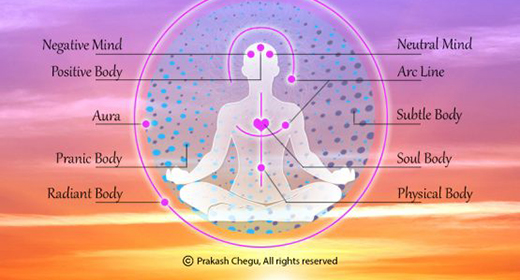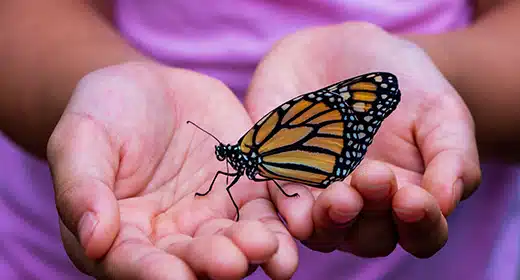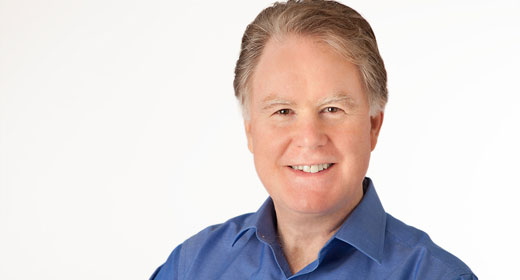by Sharon Salzberg: One of the world’s leading loving-kindness meditation teachers—
offers us a profound sense of connection through her teachings, guiding us to live our lives with greater intention and compassion. Loving-kindness is so much more than “just” a feel-good practice. It is a force that can connect, inspire, and motivate us to transform the world. Here world-renowned mindfulness teacher Sharon Salzberg, one of the foremost teachers of loving-kindness, helps to pave the way.

Who is Sharon Salzberg?
Sharon Salzberg is a world-renowned meditation teacher and a New York Times best-selling author. As one of the foremost teachers of loving-kindness, she emphasizes the ability of loving-kindness to connect, inspire, and motivate people to transform the world.
Sharon Salzberg first encountered meditation in 1969, in an Asian Philosophy course at the State University of New York, Buffalo. The course sparked an interest and motivated her to travel to India in 1970 with the simple intuition that the methods of meditation would bring some clarity and peace. It was in 1971, in Bodh Gaya, that she attended her first meditative course and spent the next few years engaged in intensive study with highly respected meditation teachers. Her intuition paid off when she returned to the US in 1974 and established the Insight Meditation Society (IMS) with Joseph Goldstein and Jack Kornfield in Barre, Massachusetts, which now ranks as one of the most prominent and active meditation centers in the Western world.
Today, she is the author of eleven books, including Real Happiness and Real Change. She is also the host of her own podcast, The Metta Hour, which features more than 100 interviews with some of the top leaders and voices in the meditation and mindfulness movement.
Sharon Salzberg on Why Loving-Kindness Takes Time
Sharon Salzberg reflects on the first time she tried loving-kindness meditation and the important lesson on patience she learned along the way.
The first time that I ever did loving-kindness practice was without a teacher. We first opened up the center; a group of us decided to do a self retreat here for a month and I had never done loving-kindness before although I had heard about it. I thought it was a perfect opportunity to do it.
I sat up in my room and I knew that it was done in successive stages and I began by dedicating a week of sending myself loving-kindness. All day long, I would go around the building—sitting in my room, sitting in the hall—saying the whole thing: May I be happy. May I be peaceful. May I be liberated. And I felt absolutely nothing.
At the end of the week, something happened to someone in the community and a number of us, quite unexpectedly, had to leave the retreat. Then I felt doubly bad—not only did nothing happen but I never even got beyond myself, which was really selfish.
I was running around upstairs in the flurry of having to leave. I was standing in one of the bathrooms and I dropped a jar of something, which shattered into a thousand pieces. The very first thought that came up in my mind was: “You are really a klutz, but I love you.” And I thought, “Oh wow! Look at that.” All those hours, all those phrases where I was just dry and mechanical and I felt like nothing was happening. It was happening. It just took a while for me to sense the flowering of that and it was so spontaneous that it was quite wonderful. So: Not to struggle, to try to make something happen. Let it happen. It will happen.

What is Loving-Kindness Meditation?
Loving-kindness is a practice and technique in which the central object we rest our attention on is the silent repetition of certain phrases. The phrases are a way of offering, gift-giving, and switching our attention. So for example, if we normally think about the mistakes we’ve made, what we did wrong, and when we failed, we’re going to switch our attention and just wish ourselves well.
You may use the phrases: May I be safe. May I be happy. May I be healthy. May I live my life with ease.
Many people ask, “Well, who am I asking?” We’re not asking anybody, we’re offering. We’re gift-giving. And then we wish others well. It may be people who’ve helped us, who we take for granted, tend to overlook, or people we don’t really know. There are many phases and stages of the practice, but we begin with the offering of loving-kindness to ourselves. Next we offer loving-kindness to a neutral party, and we end with the offering of loving-kindness to all people everywhere.
How to Find Your Loving-Kindness Phrases
Loving-kindness is meant to be done in the easiest way possible so that the experience springs forth naturally. To do it in the easiest way possible means finding phrases that are personally meaningful. The traditional phrases as are taught, begin with oneself:
May I be free from danger. May I know safety. Danger in that sense is both inner danger from the force of certain mind states, and outer danger. So, May I be free from danger. May I have mental happiness. May I have physical happiness. May I have ease of well-being—which means may I not have to struggle terribly, day by day, with livelihood or with family issues.
May I be free from danger, may I have mental happiness, but really, you should use any phrases that are powerful for you. They need to be meaningful not just in a very temporary way—May I get to this course OK—but something profound that you would wish for yourself and wish for others. Thoughts are very important in doing loving-kindness—not to struggle to get a certain kind of feeling. Let your mind rest in the phrases. You can be aware of the phrases either with the breath or just in themselves—the focus of the attention is on the phrases. Let your mind rest within them. The feelings will come and go.
Sometimes, practicing loving-kindness will feel very ordinary, very dry, or very mechanical—but it doesn’t matter. It doesn’t mean that nothing is happening or that it’s not working. What’s important is to do it, is to form that intention in the mind because we’re uniting the power of loving-kindness and the power of intention.
How to Practice Loving-Kindness Meditation
Meditation practice is like a skills-training in stepping back, getting a broader perspective, and gaining a deeper understanding of what’s happening. Mindfulness, one of the tools at the core of meditation, helps us not be lost in habitual biases that distort how we interpret our feelings. Without mindfulness, our perception is easily shaped by barely conscious thoughts, such as, “I’m shaking and my stomach is roiling with what seems to be fear, but I can never allow myself to admit that. I’ll pretend it never came up.” If we do that, it is a great struggle to be kind. There is no ready access to kindness without awareness.
Mindfulness also helps us to see through our prejudices about another person by showing us that a conclusion is simply a thought in our own mind. Mindfulness enables us to cultivate a different quality of attention, one where we relate to what we see before us not just as an echo of the past or a foreshadowing of the future, but more as it is right now. Here, we find the power of kindness because we can connect to things as they are.
Mindfulness enables us to cultivate a different quality of attention, one where we relate to what we see before us not just as an echo of the past or a foreshadowing of the future, but more as it is right now.
Making the effort to truly see someone doesn’t mean we never respond or react. We can and do attempt to restore a failing marriage, or protest at loud cell phones in public places, or try with everything in us to rectify injustice. But we can do it from a place that allows people to be as textured as they are, that admits our feelings to be as varied and flowing as they are, that is open to surprises—a place that listens and lets the world come alive.
One essential step in learning to see each other more genuinely is to bother to look. If someone yells at us, or annoys us, or dazzles us with a gift, we do pay attention to them. Our challenge then is to see them as they are, not as we project or assume them to be. But if they don’t make much of an impression on us, we have a different challenge: it is all too easy to look right through them.
In particular, the meditation exercise of offering loving-kindness to a neutral person confronts our tendency to look through people we do not know. We choose a person whom we don’t strongly like or dislike; we feel rather neutral or indifferent toward them. Very often it helps to select a near-stranger, or someone who plays a certain role or function in our lives—the checkout person in the grocery store, for example, or the UPS delivery person. We may not know much about them, not even their name.
Sending Loving-Kindness to Others
When we send a neutral person loving-kindness, we are consciously changing a pattern of overlooking them, or talking around them, to one of paying attention to them. The experiment in attention we are making through these benevolent wishes asks of us whether we can practice loving “thy neighbor as thyself” when we don’t know the facts about someone’s dependent, elderly parent, or at-risk teenager, and so our heartstrings have not been tugged.
When we think of our neutral person, we haven’t learned the story of their suspicious mole or empty evenings. We have no knowledge of their inspiring triumphs or their admirable philanthropy, and so we are not in awe of them. We aren’t seeing their tension after a disappointing job interview, or their sadness after their lover leaves. We practice wishing them well anyway, not knowing any of this, but simply because they exist, and because we do know the beauty, the sorrow, the poignancy, and the sheer, unalterable insecurity of existence that we all share.
On trains and on the streets, in our homes and in our communities, we practice paying attention—through developing mindfulness, through developing loving-kindness, through letting go of projections—because a more complete attention proffers many special gifts. These gifts can penetrate through the exigencies of social roles and even through terrible hurt. They can remove the seeming hollowness of chance encounters.
Paying attention in this way provides the gift of noticing, the gift of connecting. We find the gift of seeing a little bit of ourselves in others, of realizing that we’re not so awfully alone. We can let go of the burden of so much of what we habitually carry with us and receive the gift of the present moment.
Through paying attention we learn that even when we don’t especially know or like someone, we are nonetheless in relationship with them. We come to realize that this relatedness is in itself like a vibrant, changing, living entity. We discover the gift of caring, of tending to this force of life that exists between us, and we are immeasurably enriched by that.
In Conversation with Sharon Salzberg
On October 8th, 2020 we hosted a conversation with Sharon Salzberg:
Sharon Salzberg shares her favorite practices, deep insights, and inspiration about loving-kindness meditation. She’s joined by her good friend Barry Boyce, longtime meditation teacher and Mindful‘s founding editor.
Mindfulness Meditations Guided by Sharon Salzberg
A Meditation to Connect with Loving-Kindness—Sharon Salzberg
- Begin by thinking about someone who has helped you; maybe they’ve been directly generous or kind, or have inspired you though you’ve never met them. When you think of them, they make you smile. Bring an image of the person to mind, or feel their presence as if they’re right in front of you. Say their name to yourself, and silently offer these phrases to them, focusing on one phrase at a time.
May you live in safety.
May you have mental happiness (peace, joy).
May you have physical happiness (health, freedom from pain).
May you live with ease.
- Don’t struggle to fabricate a feeling or sentiment. If your mind wanders, simply begin again.
- After a few minutes, move on to a friend. Start with a friend who’s doing well right now, then switch to someone who is experiencing difficulty, loss, pain, or unhappiness.
- Offer loving-kindness to a neutral person who you don’t feel a strong liking or disliking for: a cashier at the supermarket, a bank teller, a dry cleaner. When you offer loving-kindness to a neutral person, you are offering it to them simply because they exist—you are not indebted to or challenged by them.
- Offer loving-kindness toward a person with whom you have difficulty. Start with someone mildly difficult, and slowly work toward someone who has hurt you more grievously. It’s common to feel resentment and anger, and it’s important not to judge yourself for that. Rather, recognize that anger burns within your heart and causes suffering, so out of the greatest respect and compassion for yourself, practice letting go and offering loving-kindness.
- Finish by offering loving-kindness to anyone who comes to mind: people, animals, those you like, those you don’t, in an adventurous expansion of your own power of kindness.
A Compassion Practice for Opening the Heart—Sharon Salzberg
- Imagine you’re encircled by people who love you. Sit comfortably, eyes open or closed, and imagine yourself in the center of a circle made up of the most loving beings you’ve met. There may be some people in your circle who you’ve never met but have been inspired by. Maybe they exist now or they’ve existed historically, or even mythically.
- Receive the love of those who love you. Experience yourself as the recipient of the energy, attention, care, and regard of all of these beings in your circle of love. Silently repeat whatever phrases are expressive of that which you most wish for yourself, not just for today but in an enduring way. Phrases that are big and open, something like: May I be safe, be happy, be healthy. Live with ease of heart. May I be safe, be happy, be healthy. Live with ease of heart.
- Notice how you feel when you receive love. As you experience yourself in the center of the circle, all kinds of different emotions may arise. You may feel gratitude and awe, or you might feel kind of shy, like you would rather duck down and have all of these beings send loving-kindness to one another and forget about you. Whatever emotion may arise, you just let it wash through you. Your touchstone is those phrases—May I be happy. May I be peaceful… or whatever phrases you’ve chosen.
- Open yourself up to receiving love. Imagine that your skin is porous and this warm, loving energy is coming in. Imagine yourself receiving. There’s nothing special that you need to do to deserve this kind of acknowledgment or care. It’s simply because you exist.
- Send loving care to the people in your circle. You can allow that quality of loving-kindness and compassion and care you feel coming toward you to flow right back out to the circle and then toward all beings everywhere, so that what you receive, you transform into giving. You give the quality of care and kindness that does actually exist in this world. That can become part of you, and part of what you express or return. When you feel ready you can open your eyes or lift your gaze to end the session.
A 3-Minute Guided Meditation to Be Kind to Yourself
- To begin, you can sit comfortably. Many of you may have your own loving-kindness practice, and it’s fine just to continue on. Common phrases you would repeat are things like, may I be safe, be happy, be healthy, and live with ease. Live with ease means: May the things in day-to-day life not be a struggle.
- May I be safe, be happy, be healthy, live with ease. You can silently repeat these phrases or whatever phrases you’ve chosen. Gather all of your attention behind one phrase at a time. You don’t have to try to force a special feeling, the power of the practice is in that gathering. And when your attention wanders—because it will—don’t worry about it. See if you can gently let go and just return your attention to the phrases.
- Then, see if you can call to mind someone who’s helped you. Maybe they’ve helped you directly and helped pick you up when you had fallen down. Maybe you’ve never met them, and they’ve inspired you from afar. So if someone like that comes to mind, you can bring them here. An adult, a child, a pet, whoever it might be, see if you can visualize an image of them, or say their name to yourself. Get a feeling for their presence and offer the phrases of loving-kindness to them. May you be safe, be happy, be healthy, live with ease. Even if the words don’t seem perfect. It’s fine. It’s the conduit for the heart’s energy.
- Now let’s have a gathering. Just with whoever comes to mind: friends, family, colleagues, pets. And offer loving-kindness to the group, to the collective. May you be safe, be happy, be healthy, live with ease.
- Then, shift your attention to all beings everywhere, all people, all creatures, all those in existence, near and far, known and unknown. May all people be safe, be happy, be healthy, live with ease.
Sharon Salzberg in Mindful Magazine
Meditation Teacher Sharon Salzberg Talks About the Power of Loving-Kindness
In the June 2020 issue of Mindful magazine, we talked to Sharon Salzberg about attention, resilience, anger, and the need to be kinder to ourselves and the world.
Barry Boyce: You’ve been practicing mindfulness for quite some time and I’ve heard you talk about how meditation and kindness are inseparably linked. Can you explain?
Sharon Salzberg: Let me start with a little background. Nowadays, if you want to practice meditation, there are meditation centers and studios all over the place, or you could take a course. You can go on online and find 50 or 100 books on meditation.
When I started, in the early ’70s, lots of us went to Asia. I chose India.
When I traveled there as an 18-year-old to meet great meditation teachers, I felt like I knew a lot. I had read plenty of Eastern philosophy and was pretty sure I had gained a good understanding. I was in for a bit of a surprise. The first thing I was taught when I went on my first meditation retreat was to pay attention to my breath.
“What,” I thought, “this is it? Pay attention to my breath? I could have done that back in Buffalo.” In Buffalo, I could even see my breath on many days. I figured I would be able to follow many breaths, maybe hundreds at a sitting. Why not? What’s the big deal?
I soon came to find out that it was not so easy as that.
In fact, I had a lot of trouble paying attention to even one breath without my mind going off into many, many thoughts. I found myself having thoughts like, why there are roundabouts on highways. Who came up with that idea? What? Why am I having such thoughts at all? I’m not a traffic engineer. It was pretty humbling to see just how hard it was to simply pay attention, and how the thoughts came tumbling down like a waterfall.
That’s where kindness needed to kick in.
I quickly discovered that if I was going to keep going with meditation, I would need to go much easier on myself. I would need to accept the inevitability of these thoughts and have some faith that my attention could indeed find its way back.
Barry Boyce: When people don’t have faith that their attention will find its way back, do you find that they will think they simply can’t meditate?
Sharon Salzberg: Oh yes. The experience of being overwhelmed by thoughts is hardly unique to me. Anyone who begins meditating will find this very thing happening to them. Feeling inadequate. So many thoughts! So little attention on the breath. I cannot meditate. Other people can do it. I cannot. And this kind of thought loop may happen again and again, and each time we can be kind to ourselves about being human beings who have thoughts.
Sometimes when people are introduced to mindfulness meditation, they come to think of it as a dry, technical exercise, a kind of hard work or mental struggle. In fact, for meditation to take hold, early on, we need some warmth and kindness toward ourselves.
It’s not a dry exercise at all. It’s learning how to be with ourselves, and when we are with ourselves in this very simple way, the attention and the kindness go together, hand in hand. Some self-compassion must arise if we are to keep going.
Barry Boyce: What else is essential to keep going?
Sharon Salzberg: Frequently in instructing meditation, we say “rest” your attention on the breath. It’s a quality of resting and settling right from the start, a gentle act, not a labored struggle. And as a result of the practice, we develop increased concentration. That is a key factor.
But we also develop greater awareness of what’s going on with ourselves, what’s happening with our emotions, and when we see a thought, we don’t push it away. We notice it. We see it for what it is. That’s how we begin to get to know ourselves better, and by extension experience what’s happening with others more. We feel our connection to them more. Paying attention is one of the kindest things we can do—for ourselves and for others.
Barry Boyce: How is it possible to rest, to develop awareness and concentration, in the midst of turmoil and anxiety?
Sharon Salzberg: With coronavirus circling the globe; schoolchildren, churchgoers, protesters, and concertgoers being shot in public; immigrant children separated from their parents; signs of resurgent racism appearing; and a deep political divide taking hold in so many places, many people these days feel deeply anxious, and despairing in fact.
These are indeed tough times, but we don’t need to feel powerless. It’s an illusion to think that we are without any agency in our lives, any ability to act. It’s also illusory to think that we can control events that are, at present, beyond our control.
We clearly don’t have control over everything, but there are things we can do. It’s always been that way. That hasn’t changed. It is not our universe to control. Knowing and acknowledging that is a key aspect of developing wisdom.
When we know that in our hearts—and stop berating ourselves for not being able to fix everything—we can go forward in a balanced way. We’re not indifferent to the needs and challenges surrounding us, or the pain others are going through. But rather than trying to simply fit into others’ expectations of what we ought to do in response, we can pay attention and look and listen for opportunities to help that accord with our capabilities and circumstances. We can respond to what calls out to us when we allow ourselves to be open.
Barry Boyce: You’re suggesting that we use mindfulness to lead us to what practical steps we can take to seek change?
Sharon Salzberg: Yes, I am, and in addition to practical steps like volunteering, donating, voting, and connecting with others, there is also something very significant we can do, starting in our own hearts. We can gradually learn to be present with the pain, anxiety, fear, and vulnerability we feel, rather than push those feelings away.
When we feel pain and yet we can go on, that’s how we build resilience.
Mindfulness practice doesn’t stop at relaxation and concentration. The relaxation and concentration allow us to stay with the feelings that emerge, no matter what is going on in life. It also allows us to savor the moments of joy in life, rather than overlook them because of all the dark clouds.
We hear a lot these days about separation, isolation, and loneliness. The British have even instituted a Minister for Loneliness. Some of this isolation seems to come from how our devices and our ways of working can wall us off from others, and some of it undoubtedly comes from the fact that when we’re anxious and afraid, we may retreat from community with other people. If we think that others are so different from us, we may hesitate to engage with them.
We are all interconnected. This is the truth of how things are. When we separate ourselves off, we are fighting that reality, including if we decide to hate someone because of their views.
We never need to hate, but we can be very clear about something that is wrong, that represents a wrong view, that demonstrates gross ignorance and aggression. We need to work against ignorance and wrong views, and yes, hate, without falling into it ourselves.
Barry Boyce: What about when that ignorance and aggression we are subjected to make us lose our temper?
Sharon Salzberg: Wrong views and actions may naturally cause us to get pretty angry. Anger can clearly be a state that causes us great distress and that can cloud our minds and cause harm when we act based on it. It’s a poison that can consume us. I’m very interested, though, in anger as the precipitating event for bringing about change, which it definitely can be. Sometimes it’s the angry person in the room who points out the thing others wish to ignore.
How do we keep the part of anger, the spark, that has intelligence, without getting caught up in the destructive part? That’s a valuable inquiry to take up, to contemplate, as part of mindfulness practice.
With mindfulness, we can develop the ability to experience the full dimension of thoughts as they arise. We don’t need to act on every thought that comes up. We can see it, but not act on it. The way forward may emerge from allowing that little bit of a gap between thought and action, especially with anger.
Barry Boyce: Meditation can help us see that gap more often, but it sure seems hard sometimes.
Sharon Salzberg: Often people will say to me, “Oh, I know meditation can be really valuable, but I just can’t do it, but my partner sure could use some!”
It’s very common for us to think we can’t meditate.
A big part of that comes from trying really hard to have a particular kind of experience. Perhaps we think that the sign that meditation is working is having a major transformational experience, so we struggle really hard to obtain that, and meditation ends up being just that: a big struggle. We miss the part about resting our attention. We’ve become too focused on ourselves and our big meditation experience, rather than letting ourselves simply be there.
I’m reminded of what one teacher said after observing a lot of us: “You are rowing and rowing and rowing, but you’re not untying the boat from the shore.” When we’re trying so hard, and so focused on us and our meditation achievement, we often overlook what’s right in front of us: the need to be kind to ourselves and to those around us.
When we’re trying to develop a regular practice for ourselves, something integrated into our regular life, having friends to help us along, a community of fellow travelers, is a great support. It’s heartening to know that you are not the only one who may have sat through a whole meditation session and noticed maybe one breath. You can laugh at yourself, along with others.
Barry Boyce: What makes it possible to laugh at ourselves?
Sharon Salzberg: It comes back to this thing we call loving-kindness that I’ve written a book about and taught about so often. Unfortunately, it’s a bit of an odd term, because it sounds kind of arcane or removed from day-to-day life. If you go to a café for a cup of tea, you’re not likely to hear the conversation at the next table being about loving-kindness, unless maybe the café is down the street from the Mindful offices!
My concern is that an unusual term like this might make the quality itself seem somewhat removed from day-to-day life. It might seem precious, in the negative sense of the word, gooey and soft, without strength or wisdom. Just a mush ball.
Nonetheless, some people have suggested we just call it “love” and be done with it, but love is a complicated term. It can mean something very superficial, like “I love vanilla yogurt,” or it can be a medium of exchange, like “I will love you, so long as the following fifteen conditions are met.” That’s not quite it.
The Pali term for loving-kindness, metta, translates simply as friendship, but that to me can merely connote companionship, doing things together, going to the movies, going out to eat, or just hanging out via Zoom in this new world of social distancing. The word that I think gets to the essence of it perhaps the most is connection. When I refer to cultivating loving-kindness, I’m talking about a bone-deep sense of connection.
Barry Boyce: What are we connecting to?
Sharon Salzberg: First off, we’re connecting to ourselves, not floating off in the ether somewhere, but being right here, experiencing our whole heart and mind. Then, we’re connecting to one another, which is not the same as liking somebody. It is rather knowing deeply that our lives have something to do with another, that the constructs of self and other, us and them, are useful constructs but they are just constructs.
At a certain intimate level of reality, it is all about “we.” That’s just how it is. We are all in this together.
I was driving with a friend and we were caught in this terrible, hideous traffic, complaining about it bitterly the whole while. And then at one point my friend said, “You know, we’re the traffic, too.”
And all of a sudden I realized, oh! There it is. It’s that sense of privilege, of centrality, that we cling to. These are my roads and these people are in my way and where are they going anyway on my Saturday?
Go away!
What happens when that sense of it all revolving around us drops away for a bit? We might realize these other folks in the traffic jam are saying the same thing about us. We’re all the traffic.
Think of all the times we’ve figured out who’s in the center and who’s at the margin and let that shape our worldview. What happens when that worldview loosens up, when that sense of centrality falls away, and it’s just us? That’s love, and it’s not weak and mushy. It’s just true.
Why Our Interconnectedness Is Our Greatest Strength
In her book, Real Change, Sharon Salzberg explores how nourishing our essential goodness and compassion empowers us to be forces of change that both soften and strengthen us.
Most of us are familiar with the description of the fight-or-flight response to stress or trauma: our common tendency to perceive a situation as an imminent threat, and react either by gearing up (physiologically, hormonally, and emotionally) to fight for survival or alternatively gearing up to run away as fast as we can.
I felt gratified when stress experts expanded these familiar descriptions to include another common, ready reaction: freezing. It made sense to me as soon as I heard it. We each engage in all three of these reactions, of course, but it seems that each of us has a tendency to gravitate toward one of these more than the others, based on our individual conditioning. I’ll lay claim to freezing as my most frequent automatic reaction, rather than getting ready to bolt or starting to attack.
The reactions of fight, flight, or freeze appear to be more of a chronic state that is starting to rule our patterns of consumption and communication, our media, our use of technology, our relationships, the dimensions of our generosity, and the limits of our imagination. We are more afraid, and we are isolating ourselves more: Not surprisingly, the number of people describing themselves as quite lonely is shooting up, as reported in the United States, in England, in Japan.
It’s no wonder we’re fearful and despairing, since it can feel like we’re being hit with an avalanche of sad news on many days, while we so rarely hear inspiring visions of the future. Many people, particularly young people, feel trapped. They say that they find themselves participating in, and therefore perpetuating, a system they did not create, that does not reflect their values, and is destructive of the planet and inequitable. How to have inspiration, they ask, when the only game in town feels rigged? There’s a cognitive dissonance that goes along with that kind of trapped feeling. It’s a form of daily moral injury, what journalist Diane Silver described as a “soul wound that pierces a person’s identity, sense of morality and relationship to society.”
As I’ve traveled around the world teaching, I’ve gotten a sense of the prevalence and depth of the moral injury resulting from world events. In the political climate of the United States in early 2018, I myself encountered near at hand the very ingredients I needed to feel triggered: deception from authority figures, shifting narratives not in accord with objective reality, one’s own perception of the truth continually undermined. My childhood had been shaped by people who I believe cared deeply about me. Yet, they thought the best way to express that caring was by never mentioning my mother after she died when I was nine. They thought it best to describe my father’s overdose of sleeping pills when I was eleven as accidental—never explaining how a mere accident led to the rest of his life being spent in one psychiatric facility or another. It was painful to figure out when I was away at college: “Oh, that kind of pattern speaks more of suicidal intention than of an accident.” Feeling something to be true right down to the cells of your body while having that truth affirmed exactly nowhere outside, in fact denied, can make you feel just crazy. That was the flavor of my childhood.
Soft and Strong
When I want to summon strength and power in the midst of awfulness and hate, I contemplate water. Our ideas of strength so often surround images of things that are hard—like rock or even a clenched fist. Perhaps that’s why we think love doesn’t include strength, just softness. We are thinking in only one dimension. That’s why I think of water, in all its manifestations. Look at the many ways we experience water: It trickles, spurts, floods, pours, streams, soaks, and shows itself in many more modes. All these convey evanescence, release, flow. They are all about not being stuck.
Water is flexible, taking the shape of whatever vessel it flows into. It’s always interacting, changing, in motion, yet revealing continual patterns of connection. Water can be so expressive, a signal of our most heartfelt feelings. We cry tears of sorrow, tears of outrage, tears of gratitude, and tears of joy. Water can be puzzling, seeming weak or ineffectual, yielding too much, not holding firm. And yet over time water will carve its own pathway, even through rock. And yes, water freezes. But it also melts.
Human beings have always found uplift and inspiration in metaphors, like water, but we also take inspiration from other people, and their strength and resiliency in the face of difficult circumstances—the ways in which they unfreeze themselves and make change. Not just in one way, but in as many ways as water flows. I have been so moved by people I know who act in ways that seek change and who also tap into an inner strength—a way of being as well as a way of acting. I want to lift up exemplary human qualities wherever I see them emerge, however people get there, because it is in recognizing those qualities that we remember what’s possible for us.
Envisioning What Is Possible
This journey of envisioning what’s possible in a very large sense is about agency. It’s about how we marry empowerment to our love for the world, what matters to us, what wrongs we want to right and what collective dreams we hope to realize. Whether that’s resolving conflicts with a crotchety neighbor or combating global warming, certain fundamental principles and practices of mindfulness can lead to the clarity and confidence that let us take that next step.
I remember going to see an old farmhouse for sale down the road from the Insight Meditation Society in Barre, Massachusetts, which I cofounded in 1976 with Joseph Goldstein and Jack Kornfield. I went with Joseph and a friend, Sarah Doering. The farmhouse, as far as I could tell, was simply falling apart. Joseph and Sarah chatted happily. “Well, we could try to move this wall, or at least open up that passageway… Underneath this wrecked floor might well lie hidden beauty… What if we built a small addition onto that door for a porch?”
Finally I broke in with, “Please, let’s not buy it.” I just couldn’t imagine it looking like anything much different from what it looked like right then, even if repainted or tidied up. In my mind, it was forever dilapidated, forlorn, and in disrepair.
They didn’t listen to me at all.
I realized the vision of what was possible had already been formed in each of their minds. Their visions may not have been identical, but each was bold and, importantly, realizable. They weren’t overly idealistic visions bound to be doomed by impossible fundraising shortfalls or the prospect of too much work—except in my mind. I realized they were actually holding the vision of what it was and the vision of what it could be simultaneously. Change would take resources—time, effort, community, money—but the spark that would get things started was to believe that the vision was possible in the first place.
The Truth of Our Interconnectedness
I’m not skilled at seeing the seeds of longed-for transformation in a building. I’m better at seeing it in people. I’ve looked many times at a friend in the throes of a terrible divorce or other devastating loss and been able to picture their healing and expansive happiness. I can see it in front of me, like a faint but discernible silhouette amid the chaos and pain of their current situation. And I’ve been right.
And when I am in touch with the perspective and sense of openness that my meditation practice has strengthened in me, I very much see the healing we are capable of—in communities, in cultures, in this world.
I believe that the love we crave, and that we have available to give, is a healing force. Love is not soft and mushy. It is strong and resilient. It springs from the truth of our interconnectedness, and is powerful because it is aligned with what is true.
I believe in the possibility of a world where our interconnection is a deeply known and motivating force, where no one is left out, where the innate dignity of every person is acknowledged, and where hatred and fear and greed can be tempered. I believe in a world where change might be hard, but is always seen as possible, however stuck we might feel in any given moment. I believe in a world where we can have wisdom to guide us, we can have love to propel us, and we can have the support of one another to try to accomplish a vision of inclusion and care. I also believe in justice, in a world where actions have consequences, where people are held accountable even as we try to take care of one another.
And I believe in a world where the fluidity and softness of love—like water—might superficially seem like the weakest thing of all, but lo and behold, it is indomitable. It can even wear away rock.
What kind of world do you most deeply believe in?
Excerpted from Real Change, © 2020 by Sharon Salzberg, with permission from Flatiron Books.
Love Everyone
In the August 2017 issue of Mindful magazine, Sharon Salzberg explores how we can extend our hearts to every single person—not just the people we know or like, and not just when we’re feeling good.
I have a good friend who looks at me like I’m crazy whenever I talk about loving everyone. “Are you kidding me?” she asks. “Love everybody? I have enough trouble loving the people I already love! And now I’m supposed to love people I don’t care about, not to mention people who do terrible things?”
I get her point. We live in a world punctuated by horrifying acts of violence, in which entire groups of people are marginalized by virtue of race, class, religion, nationality, sexual preference, and gender identity. How is it even possible to imagine loving them all? And what about the truly difficult people in our daily lives—the colleague who takes credit for our ideas, the spendthrift relative who’s always asking for a loan, the neighbor who cut down our tree. Not to mention the random thorns in our side who spike our blood pressure and pull into parking places that should have been ours. There are days when we can feel good simply about staying calm.
Jacqueline Novogratz, bestselling author of The Blue Sweater: Bridging the Gap Between Rich and Poor in an Interconnected World, recounts how the story of her beloved blue sweater, given to her by an uncle when she was a little girl, inspired her to start Acumen, a nonprofit social venture fund that addresses global poverty. One day while jogging in Kigali, Rwanda, Novogratz spotted a small boy wearing the blue sweater—still bearing her name tag—that she’d donated to her local Goodwill a decade earlier, more than five thousand miles away. “I’ve held that story as a metaphor for how interconnected we are, how our action and our inaction can impact people we might never know and never meet, every day of our lives, all around the world,” she says.
There’s no denying that it takes effort to set the intention to see our fundamental connectedness with others. In a certain sense, the path of least resistance in life is survival, getting by—doing the least to complete what’s necessary to put food on the table and stay safe. If we stretch ourselves to open our minds, to see our shared humanity with others, we allow ourselves to see the existence of community and generosity in unexpected places. We just need to challenge ourselves to opt for the path that may take a little more effort but actually helps us let go of our conditioned resistances.
Yet it’s also true that we miss a lot when we push for unity at the expense of understanding the differences in context, experience, hopes, and fears we each may have. It’s all too easy to slip into a “we’re all alike at the core, so we should all get along” kind of statement. It’s not real love if we don’t also honor our differences—as long-term couples and friends find out, and as communities and workplaces also find out.
Just think about what it’s been like when you are in a place—a group, an event, a training session—where you have the feeling “I belong here,” in contrast to what it’s like when you are in a place where you sense you don’t belong: the uneasiness, the uncertainty about social cues, the dread of inevitable humiliation.
What about being in an environment where you’ve been told outright you don’t belong? Then your anxiety wouldn’t seem so much about the fight-or-flight syndrome built into your biology from long, long ago; it would feel (and in fact be) awfully current.
So the question arises: along with our oneness, can we also recognize the vast relativity of experience—and make room for it? The combination of realizing our distinctiveness along with our unity is seeing interdependence.
Today, with unprecedented threats to our planet and divisions among people, awareness of our interdependence is no longer optional. It’s critical that we widen our attention to include those we encounter as we go about our daily lives, including our dry cleaner and the stranger sitting next to us on the subway. We extend our sense of inclusion even further to people we may have disagreements with, people whose actions we disapprove of, even those who may have harmed us or those we care for. We don’t have to like what they’ve done, and we might take very strong action to try to prevent their doing it ever again, but as our experiences of the universality of suffering grows, our sense of interconnectedness deepens, and we begin to wish others could be free in a new way—in spite of their actions, beliefs, or their positions in the world.
Getting to Compassion
As modern neuroscience has discovered, we’re wired for empathy. We literally have brain circuits focused on “feeling with” others. “It’s a genetic imperative for us to care,” says James Doty, MD, a professor of neurosurgery at Stanford University. It’s essential to the survival and flourishing of our species. But the neural circuits related to empathy aren’t always activated, especially when we’re feeling anxious or stressed. And at other times, we may feel so much empathy for another’s pain that we lose our own sense of equilibrium.
In 2004, neuroscientist Tania Singer and her colleagues published an important paper showing that pain-sensitive regions in the brain get activated when we empathize with someone else’s pain. In other words, when we say, “I feel your pain,” we’re voicing the literal truth. But this is not always a good thing.
Singer, who is director of the Department of Social Neuroscience at the Max Planck Institute for Human Cognitive and Brain Sciences in Leipzig, Germany, now calls empathy a “precursor to compassion,” but notes that too much of it can have negative consequences. In an interview with the Cognitive Neuroscience Society, she explained, “When I empathize with the suffering of others, I feel the pain of others; I am suffering myself. This can become so intense that it produces empathic distress in me and in the long run could lead to burnout and withdrawal. In contrast, if we feel compassion for someone else’s suffering, we do not necessarily feel their pain, but we feel concern—a feeling of love and warmth—and we can develop a strong motivation to help the other.”
What’s more, Singer said, even the neural networks underlying empathy and compassion are different; the former increases painful emotions, while the latter is associated with positive feelings.
These findings have a lot of implications for burnout, a distinct kind of exhaustion often characterized by loss of motivation, stress, anger, depression, and dissatisfaction. As a meditation teacher, I often lead retreats for caregivers—mothers, fathers, sons, daughters, spouses, nurses, doctors and hospice workers, therapists, chaplains, and many more. People in positions or professions of caregiving can be particularly vulnerable to burnout, as they tend to empathize with and take care of others without necessarily refilling their well through self-care.
Ellen, who works at a school for students diagnosed with mental illnesses—spanning mild anxiety to severe schizophrenia—is prone to burnout at her job. “I am often in a classroom full of emotional expressions, including anger, anxiety, muteness, screaming, throwing chairs, tuning out with an iPod, tears, and more tears,” she tells me. Ellen is passionate about her work and committed to her students, but describes herself and her fellow teachers as getting “pummeled” by the student body’s resistance to rule enforcement.
Unsurprisingly, Ellen explains that she not only feels frustration and fatigue but often also a sense of hopelessness. When I asked Ellen how she finds meaning each day or if she relies on any self-care routines to replenish her energy, she responded by telling me that she is renewed by the sense of emotional openness between her and her students. “The only real hope I could see is when those kids sincerely felt that you cared about them and believed they could be better and saw some potential in them.”
And in addition to offering students encouragement and support, Ellen admits vulnerability of her own: “And we also told them, ‘I feel that way, too, sometimes’; ‘It is really hard for me to get to work some days, too’…Telling them the truth, showing them that we can share the same feelings…has made a difference to them and, I think, given them hope. And it gave me hope to give them hope.”
The authenticity that Ellen brought to her relationships with students—and that they gave her in return—helped nourish her, despite the exhaustion and frustration she felt. Her meditation practice fostered that emotional openness, helped her not be engulfed by the pain of her students, and taught her how to return to a place of steadiness in those times she did get overwhelmed. Like Ellen, we can be compassionate while also strong; understanding while also savvy. Healthy boundaries require balance.
Compassion is not just a feeling but a skill that can be learned and applied in our lives in surprising ways. While we typically think of this skill as benefiting others, compassion can also be thought of as an attitude toward living, one that fosters self-care. There’s a strong link between compassion and both physical and mental health. When we act compassionately, our vagal tone—or the neural connection between the brain, heart, and other organs—increases. This, in turn, leads to the release of oxytocin, the feel-good neuropeptide that calms the sympathetic nervous system, including the fight-or-flight—that is, fear—response. As a result, our heart rates and blood pressures drop, inflammation is reduced, our immune systems are strengthened, we’re less prone to stress —and we may even live longer. Researchers have actually proven that strong social relationships predict a 50%-increased chance of longevity. What’s more, the greatest advantages come not from receiving love but from offering it to others.
Until we can relate to our own pain with kindness and acceptance, we’re more likely to defend ourselves against the pain of others. Or perhaps we do, in fact, engage with the pain of others, but are inclined to offer support out of a desire to receive validation to soothe our own pain. If we turn away from our own pain, we may find ourselves projecting this aversion onto others, seeing them as somehow inadequate for being in a troubled situation. And, paradoxically, when we truly allow ourselves to feel our own pain, over time it comes to seem less personal. We start to recognize that what we’ve perceived as our pain is, at a deeper level, the pain inherent in human existence. In fact, it is awareness of both our shared pain and our longing for happiness that links us to other people and helps us to turn toward them with compassion.
Kevin Berrill, a clinical social worker and bereavement counselor who teaches mindfulness to oncology patients and their families, says that he’s able to sense the difference between empathy and compassion in himself when he’s working with clients. ‘’I’m aware that I’m best able to serve when I’m in a compassionate place,” he says, noting that, over the course of his career, there’s been a shift from a tendency to feel another’s pain to simply be present with it. “I love my work the most when I’m in that state of flow. I don’t try to offer solutions or fix anything prematurely. I feel calm and peaceful and fully engaged. I can hold another’s pain without drowning in it,” he explains, adding that he can go through a wrenching session and come out feeling awake and alive. Berrill attributes the movement from empathy toward compassion to his own practice of mindfulness. And, he says, “When I’m in that place of compassion, I feel a deep sense of kinship and affection for the people I’m working with. I find myself loving them.”
Yet when we talk about compassion and love for others, we must also talk about love for ourselves. This isn’t simply because opening ourselves up to others feels good (which it does). Rather, we need to think of the relationship between loving ourselves and loving others. Unless we take care of our own needs and respect our own boundaries, we may end up feeling depleted, exhausted, and so burned out that we endanger our physical and psychological well-being.
Alas, this lesson is often overlooked. During a discussion following a recent talk I gave on compassion, Eileen raised her hand. Eileen, a second-grade teacher and single parent who is the primary caregiver for her ailing mother, described her constant feelings of guilt with a look of worry on her face. “There’s so much suffering in the world, I feel like I should be doing more all the time,” she began. “But between caring for my mom and my kids, and teaching all day, I just don’t have the time or energy.”
I was grateful to Eileen for sharing her concerns. So often, well-intentioned students interpret the teachings on compassion to mean they should be helping others 24-7, regardless of the toll that may take on them. But most of us, including me, are not saints, nor should we expect ourselves to be. We all have our limits. In order to avoid burnout and practice true compassion, it’s important to remember that we can only do what’s possible for us; when we try to do more, we risk feeling resentful or making ourselves ill. What’s more, the capacity to give to others varies from person to person. Ultimately, compassion has more to do with the attitude we bring to our encounters with other people than with any quantifiable metric of giving.
Us versus Them
A recent body of research shows that people with the most wealth and social status pay scant attention to those with less power. The haves tend to lack compassion for the hardships the have-nots endure. Writing in The New York Times, psychologist Daniel Goleman said, “Social distance makes it all the easier to focus on small differences between groups and to put a negative spin on the ways of others and a positive spin on our own.” But, he added, “In contrast, extensive interpersonal contact counteracts biases by letting people from hostile groups get to know one another as individuals and even friends.” This kind of camaraderie is far more common among people who live in proximity and, out of necessity, come to rely on one another.
Ultimately, a host of cultural assumptions encourage us to act according to this mentality. We live in a competitive, individualistic culture, where success is often seen as triumphing over others; alternatively, we think that repressing parts of ourselves that are culturally undesirable (such as emotional states like anger and anxiety) will lead to happiness. So rather than doing what social psychologist Jonathan Haidt refers to as stepping outside of our “moral matrix” and seeing ourselves as fundamentally related to everyone else, we think we have no choice but to meet anger with anger, or separate ourselves from others in order to feel freedom.
Of course, the opposite often becomes true. Seeing others as “them” makes us feel stuck. It also keeps us from ever accessing a fresh perspective—a new way of relating to our experiences, to ourselves, and to them. Respecting differences while gaining insight into our fundamental connectedness, we can free ourselves from the impulse to categorize the world in terms of narrow boundaries and labels.
An Intention to Stretch
The first step toward feeling compassion for others is to set the intention to try it out. Regardless of whether we have certain fears or feelings of aversion when considering this idea, we can relish the experience of exercising our minds and hearts. While we may be biologically wired to look for differences, we can also accept that there is validity in experimenting with new habits, wisdom that results from encouraging ourselves to learn and expand.
This works for groups we may harbor resentment toward, as well as individuals. We need patience, though; opening our shuttered hearts has its own timetable. Often, we may spend a while just going through the motions. Yet with a clear intention and a willing heart, sooner or later we experience the joy and freedom that arises when we recognize our common humanity with others and see that real love excludes no one.
There’s no need to begin with judgment or harsh discipline. I’ve had students tell me they feel inadequate upon realizing that love for others doesn’t spring forth from their hearts like water in a babbling brook. Finding this boundless love isn’t the result of a goal-oriented search, but a practice. We experiment with what it feels like to treat ourselves with kindness whether we “succeed” or “fail.” We open our eyes to the suffering and joy of those we see in line for security in the airport as much as we do to our family members.
None of this is easy. Learning the practice of loving-kindness meditation for the first time challenged my emotional fabric in ways I didn’t expect. As I practiced sending phrases of loving-kindness to myself, then to benefactors and to acquaintances, to difficult people, and—finally—all beings, I began noticing just how much I was conditioned to entangle myself in judgments, assumptions, fears, and stories. This act of noticing itself is part of real love. We see that we can set the intention to stretch past these habits we’ve gotten used to—both internally and as the result of familial, circumstantial, and overarching societal factors. We are not doing something phony or trying to force ourselves to be hypocritical or pretentious. Rather, we stretch because, as human beings with capacity for real love, we can. We learn to move and breathe in a new way, until we realize one day how much stronger we are.










































